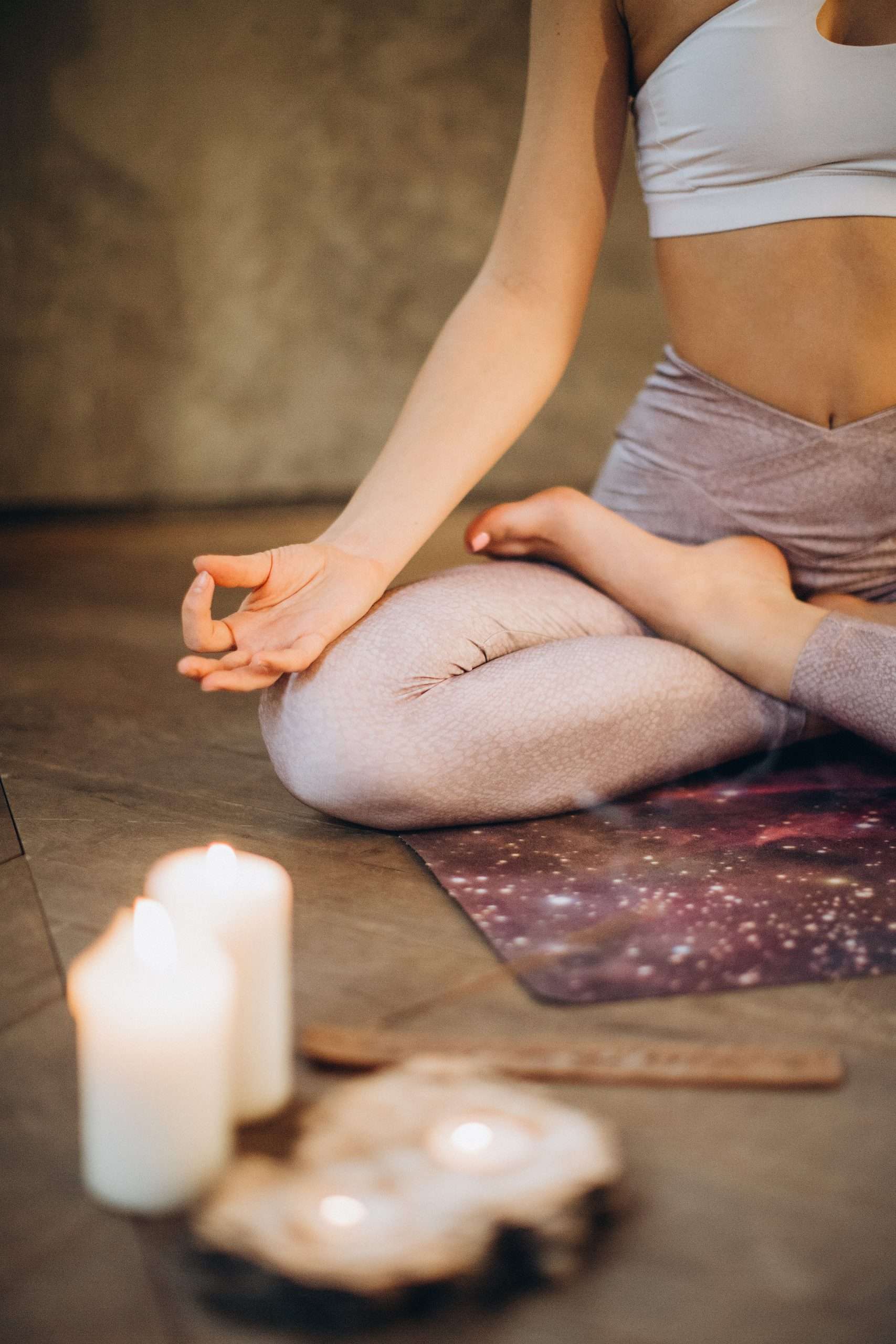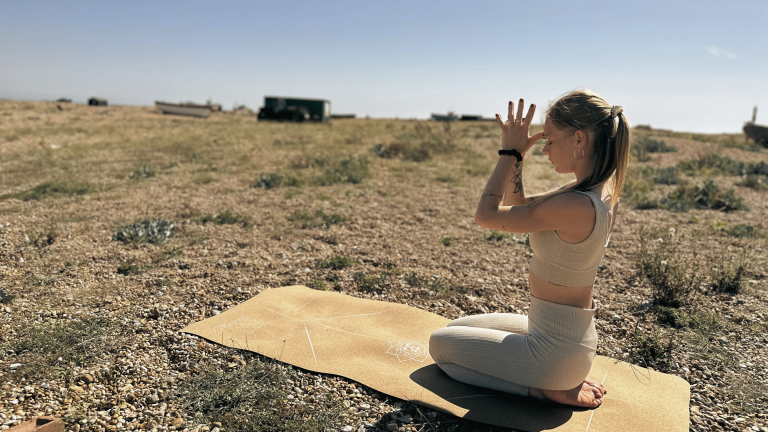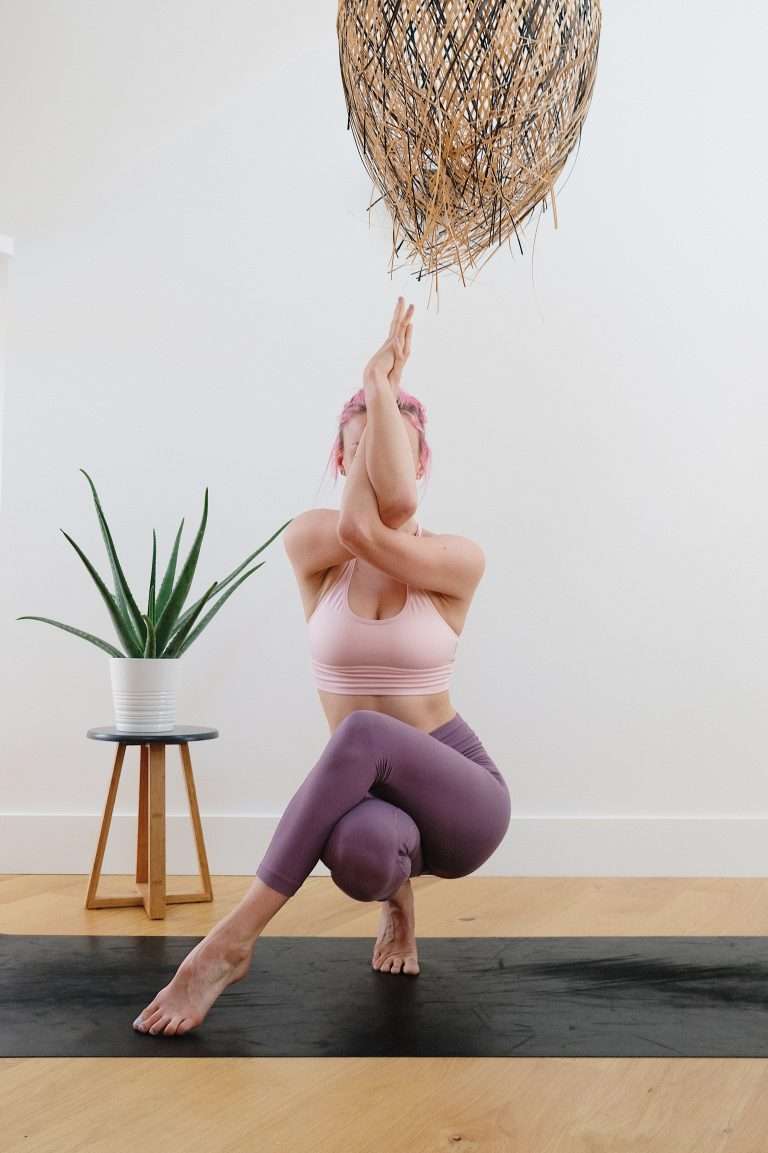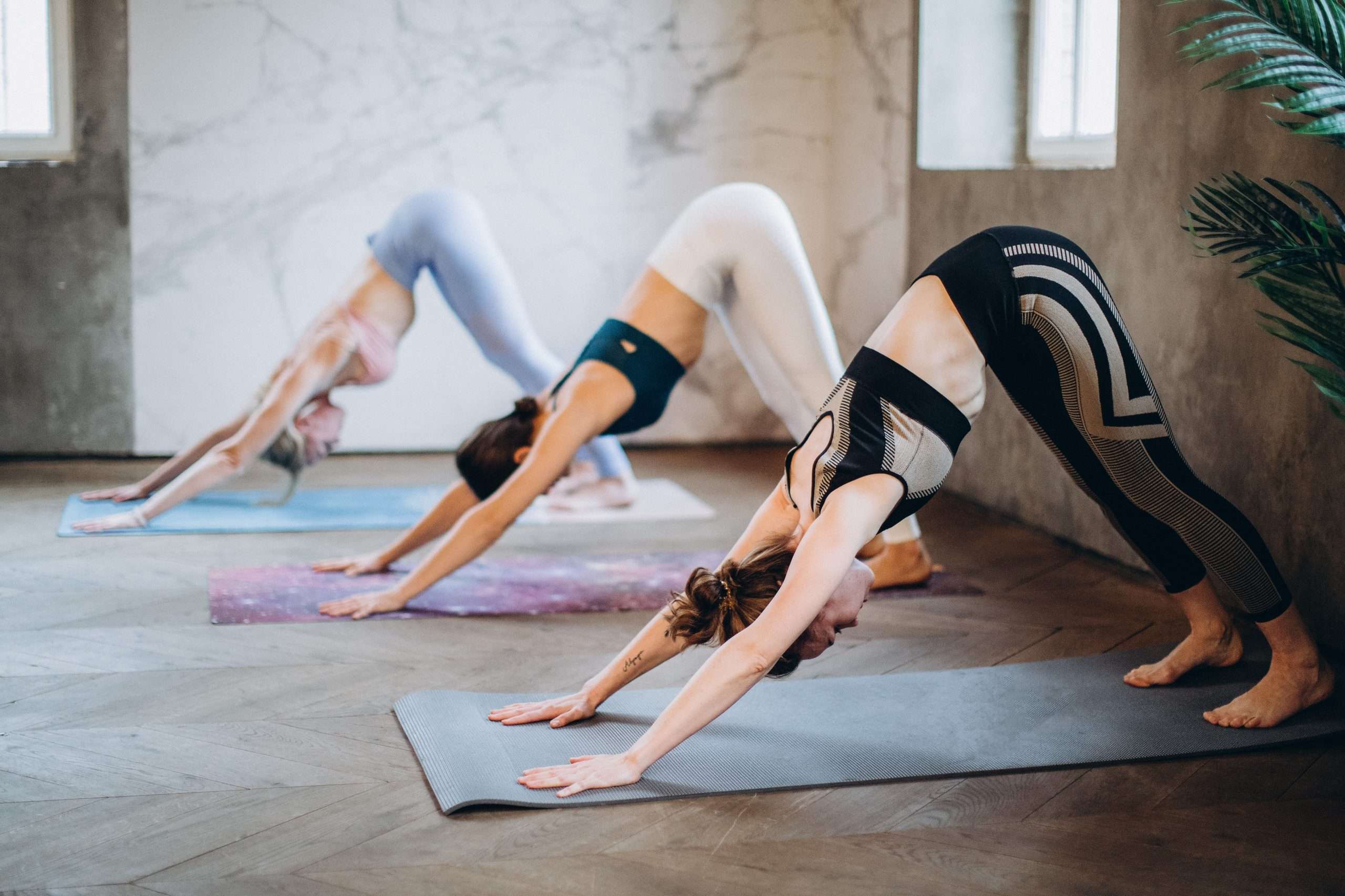3 Tips for Practicing a Yoga Handstand
Practicing a yoga handstand is an exhilarating journey that teaches us much more than just acrobatics. It’s about patience, strength, balance, and most importantly, the power of the mind. While we embrace the journey and its valuable lessons, there are three essential tips that can bring more lightness and stability to your yoga handstand practice.

1. Cultivate the Right Mindset
Handstands are not just a physical challenge; they’re a mental one too. Often, it’s our own thoughts that hold us back, convincing us that we can’t achieve this seemingly impossible feat. But remember, your body is more capable than your monkey mind might suggest.
Practice Aparigraha: This ancient yogic principle encourages us to let go of attachment and greed. In the context of handstands, it means releasing the obsession with achieving the perfect pose. By freeing ourselves from the outcome, we liberate valuable energy and open the door to a more open-minded and enjoyable practice.
Some ways in which mindset plays into our yoga handstand practice are these:
Overcoming Fear and Self-Doubt:
Inversions can be intimidating, especially for beginners. Fear and self-doubt often creep in, making you question your ability to balance upside down. Your mindset can either reinforce these doubts or help you conquer them. Embrace the challenge of your handstand journey and understand that it’s okay to fall and take your time.
Cultivating Patience:
Inversions require patience and persistence. Progress in these poses often comes in small increments, and it’s easy to become frustrated if you don’t see immediate results. A healthy mindset encourages patience and the recognition that yoga is a journey, not a destination. Lear nto embrace the journey and celebrate small steps along the way.
Letting Go of Perfection:
The pursuit of perfection can be counterproductive in yoga inversions. When you fixate on achieving the “perfect” pose, you might push yourself too hard, risking injury or experiencing frustration when you don’t meet your own unrealistic standards. It’s about honoring your body’s unique abilities and practicing safely – and have fun!
Embracing Non-Attachment:
Inversions, like all yoga practices, teach us about non-attachment (Aparigraha). As mentioned above, non-attachment in inversion practice means letting go of the desire for a specific outcome. When you’re too attached to achieving a particular pose or holding it for a certain duration, you create unnecessary stress and tension. Discover the sense of freedom that comes from letting go of expectations.

Building Confidence:
Finally, a positive mindset in inversion practice can boost your self-confidence. As you overcome challenges and progress in your practice, you’ll gain confidence not only in your physical abilities but also in your mental strength and resilience. Confidence is a powerful tool that extends beyond your yoga mat and can positively impact other areas of your life.
2. Build a Strong Foundation
A solid foundation is the key to any successful endeavour, and yoga handstands are no exception. Before you begin to go upside down, ensure that you have a strong foundation to stand on – literally. Here are some reasons why a good foundation is important for your handstand practice:
More Stability and Balance
Place your hands firmly on the ground, with fingers spread wide. Keep your palms pressing into the mat and make sure your shoulders are stacked directly over your wrists. Avoid the common mistake of having your hands too wide or too narrow; this can make your base unstable, making it harder to find balance in your handstand.
Use Less Momentum For your yoga handstand
Similarly, if your shoulders are too far behind your wrists, you require more momentum to come into handstand – you basically jump instead of learning to ‘lift’ into your handstand. Once you get upside down, you then have to balance out the momentum in order to hold your handstand – which is unnecessary work.
Use the Skeletal Structure for Support
Once you are upside down, keeping your joints stacked will help you hold a yoga handstand more easily – using the body’s structure, rather than relying on muscular strength. In this way, you can conserve energy.
Without proper alignment, you’ll need to engage your muscles more intensely to compensate for the misalignment. This can lead to premature fatigue, making it challenging to sustain a handstand for an extended period.
Avoiding Injury with a Solid Foundation
Stacking joints also reduces the risk of injury. When your joints are aligned, the forces generated by your body weight and gravity are distributed evenly. Misalignment can create excessive stress on certain joints, such as the wrists or shoulders, potentially leading to strain, discomfort, or injury over time.
When your foundation is strong, you’ll need less effort to get into and maintain your handstand, conserving energy for refining your technique and enjoying the experience.
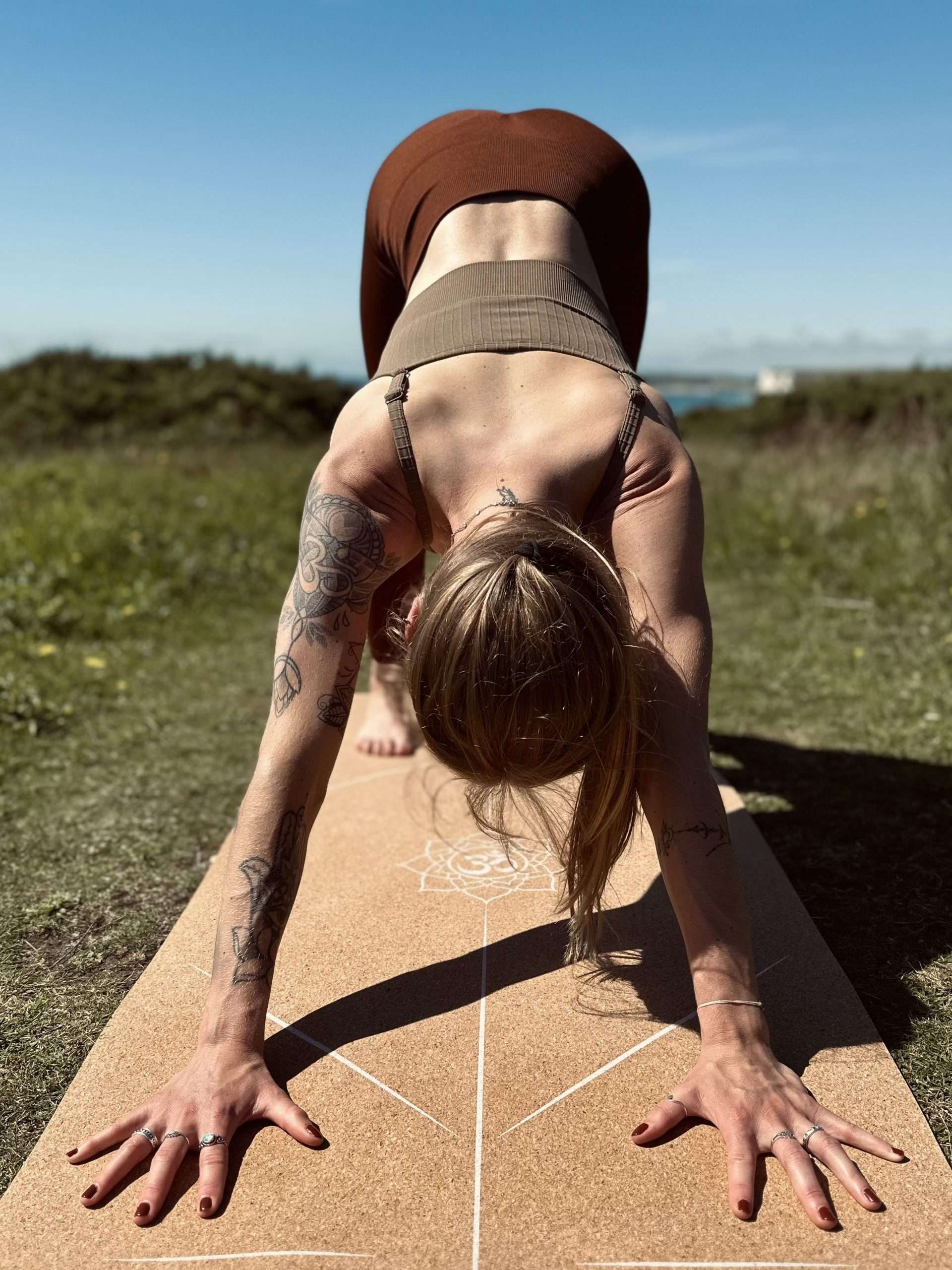
3. Breathe, Always
It may sound obvious, but it’s a crucial point that’s often overlooked in the excitement of attempting a handstand. Your breath is your anchor, your connection to the present moment, and the antidote to the doubts and distractions that may flood your mind.
There are two main reasons for breathing consistently when going upside down:
Breath as a Balancing Tool:
Your breath serves as a powerful tool for finding balance and stability in handstands. When you inhale and exhale mindfully, you can make subtle adjustments to your body’s position and engage your core muscles effectively.
For example, exhaling can help you engage your core more deeply, which is essential for maintaining a straight line in your handstand. As you press the ground away, the exhale activates your abdominal muscles, providing the strength needed to control your posture. In contrast, inhaling can help you lift and elongate your body, creating a light and buoyant sensation.
By synchronizing your breath with your movements, you create a harmonious flow that supports your balance and control in the handstand. The breath becomes a rhythmical guide that helps you refine your alignment and stay centered.
Breath for Mental Calmness:
Handstands can be mentally challenging, and anxiety or fear can disrupt your balance. Your breath can act as a calming anchor for your mind. When you focus on your breath, you shift your attention away from anxious thoughts and center it on the present moment.
Deep, steady breaths can help quiet the mental chatter, reducing distractions and enhancing your concentration. As you become more mindful of your breath, you’ll find it easier to let go of worries and stay fully engaged in your handstand practice.
Additionally, controlled breathing promotes relaxation. Tension and stress in your body can hinder your handstand progress. By using your breath to release tension and stay calm, you create a more conducive environment for success.

As you practice yoga handstands, pay close attention to your breath. Notice when you unconsciously hold your breath or when it becomes shallow. Keep your focus on the rhythm of your breath. For instance, exhale as you activate your core and press away from the ground, and inhale as you gracefully lift into your handstand.
🌟 Remember, yoga handstands are not just about defying gravity; they’re about discovering your inner strength, resilience, and the limitless potential of your body and mind. Embrace these tips, trust your journey, and watch as your handstand practice soars to new heights. Keep breathing, stay patient, and most importantly, enjoy the ride!
Make sure to also check out my Instagram page at @kimcarolinayoga for regular tips, videos, and more 🤸♀️🌟

